Mitsubishi Eclipse Cross vs Vauxhall Grandland – Differences & prices compared
Compare performance, boot space, consumption and price in one view.
Find out now: which car is the better choice for you – Mitsubishi Eclipse Cross or Vauxhall Grandland?
The Mitsubishi Eclipse Cross (SUV) comes with a Plugin Hybrid engine and transmission. In comparison, the Vauxhall Grandland (SUV) features a Electric or Petrol MHEV engine with Automatic transmission.
When it comes to boot capacity, the Mitsubishi Eclipse Cross offers 359 L, while the Vauxhall Grandland provides 550 L – depending on how much space you need. If you’re looking for more power, decide whether the 188 HP of the Mitsubishi Eclipse Cross or the 325 HP of the Vauxhall Grandland suits your needs better.
In terms of consumption, the values are 2 L per 100 km for the Mitsubishi Eclipse Cross, and 16.90 kWh5.50 L for the Vauxhall Grandland.
Price-wise, the Mitsubishi Eclipse Cross starts at 36000 £, while the Vauxhall Grandland is available from 31200 £. Compare all the details and find out which model fits your lifestyle best!
In the competitive compact SUV segment, the Mitsubishi Eclipse Cross and the Opel Grandland stand out with their unique design and features. The Eclipse Cross impresses with its dynamic styling and advanced infotainment system, while the Grandland offers a spacious interior and a strong emphasis on safety. Ultimately, the choice between these two models will depend on whether you prioritize sporty aesthetics or practicality in your everyday driving experience.
Mitsubishi Eclipse Cross
The Mitsubishi Eclipse Cross presents a sleek fusion of dynamic design and versatile functionality, perfect for urban adventures and weekend getaways alike. Its elegant lines and bold front grille make a strong statement on the road, while its well-appointed interior offers a comfortable and connected driving experience. With advanced safety features and intuitive technology, the Eclipse Cross ensures drivers feel secure and in control, whether navigating city streets or scenic routes.
details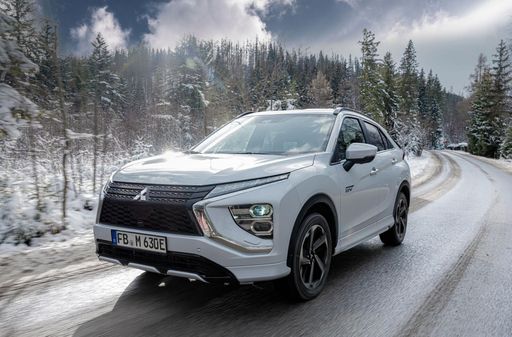 @ Mitsubishi Motos
@ Mitsubishi Motos
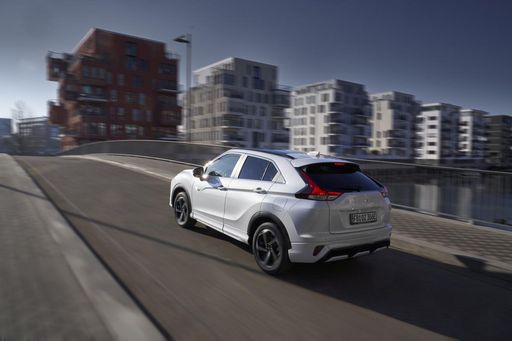 @ Mitsubishi Motos
@ Mitsubishi Motos
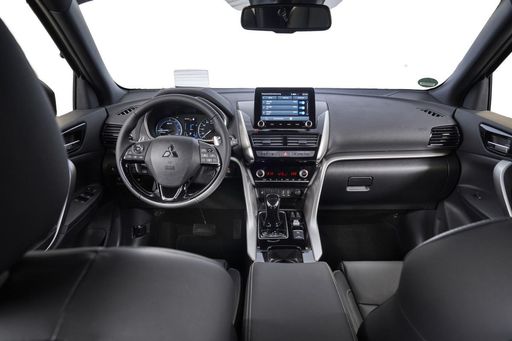 @ Mitsubishi Motos
@ Mitsubishi Motos
Vauxhall Grandland
The Opel Grandland offers a blend of style and practicality, making it an appealing choice for those seeking a versatile SUV. Its sleek design is complemented by a comfortable and spacious interior, providing an enjoyable driving experience for both short commutes and long journeys. Advanced technology and safety features enhance the overall appeal, ensuring drivers feel confident and connected on the road.
details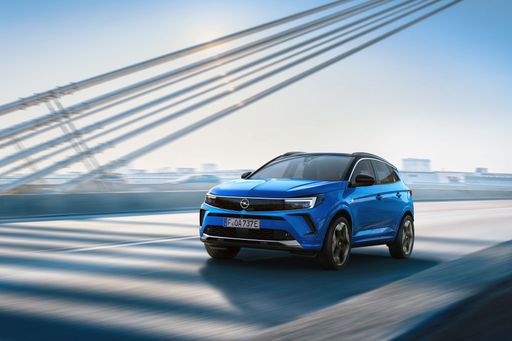 @ media.stellantis.com
@ media.stellantis.com
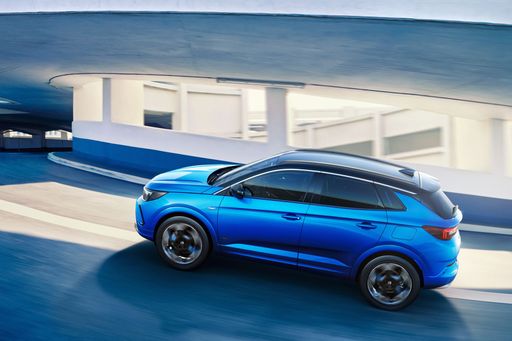 @ media.stellantis.com
@ media.stellantis.com
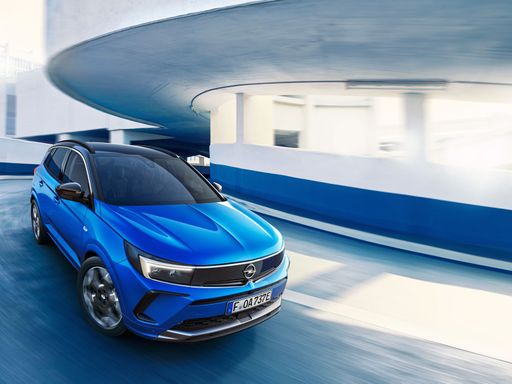 @ media.stellantis.com
@ media.stellantis.com
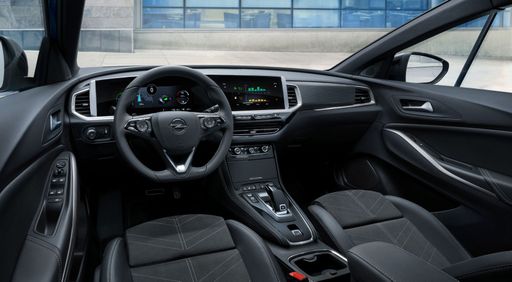 @ media.stellantis.com
@ media.stellantis.com
The automotive market is brimming with options, and if you're in the market for a stylish and practical SUV, two compelling contenders are the Mitsubishi Eclipse Cross and the Opel Grandland. Both vehicles offer innovative technology, efficient performance, and a comfortable ride, but how do they stack up against each other? Let’s delve into a comprehensive comparison.
Design and Dimensions
The Mitsubishi Eclipse Cross stands at 4545 mm in length, 1805 mm in width, and 1685 mm in height, presenting a robust and sporty silhouette. With its bold front grille and angular design, the Eclipse Cross exudes confidence on the road. It features a trunk capacity of 359 liters, providing adequate space for everyday use.
In contrast, the Opel Grandland comes in slightly larger at 4650 mm long and 1934 mm wide, with a height of 1665 mm. Its modern and sophisticated styling is complemented by a spacious trunk that boasts a capacity of 550 liters, making it a more practical choice for families or those needing extra cargo space.
Engine and Performance
When it comes to powertrains, both vehicles offer diverse options. The Eclipse Cross is available as a Plugin Hybrid, delivering 188 HP from a 4-cylinder engine with a capacity of 2360 cm³. It features an all-wheel-drive system, ensuring optimal traction and stability. The Eclipse Cross has an impressive fuel consumption of just 2 L/100km, with a CO2 emission rating of 46 g/km.
The Opel Grandland offers a broader range of options with petrol MHEV, Plugin Hybrid, and electric variants. The petrol engine options provide between 136 to 213 HP, supported by advanced automatic transmission systems, including dual-clutch technology. Its consumption ranges from 0.8 L/100km for hybrids to 6.4 L/100km for petrol variants. Notably, it also achieves a remarkable electric range of up to 585 km, especially impressive for eco-conscious drivers.
Acceleration and Speed
In terms of agility, the Eclipse Cross takes 10.9 seconds to accelerate from 0-100 km/h, reaching a top speed of 162 km/h. While adequate for daily driving, it lags behind the Grandland, which can accelerate in as little as 7.8 seconds, depending on the chosen variant, and tops out at speeds reaching 220 km/h.
Technology and Innovations
Both SUVs come loaded with technology to enhance the driving experience. The Eclipse Cross integrates advanced infotainment features with a user-friendly interface, accompanied by safety systems such as adaptive cruise control and lane departure warning. The hybrid technology also emphasizes eco-friendliness, providing an electric range of up to 45 km for short trips without emissions.
On the other hand, the Grandland impresses with its high-tech digital cockpit, featuring a fully digital display that offers various vehicle information at a glance. It supports smartphone connectivity and advanced driver assistance systems that include automatic emergency braking and a 360-degree camera system. Such innovations enhance the vehicle's safety and driver convenience, making it an attractive choice for tech-savvy consumers.
Comfort and Interior Space
Both models seat five and offer comfortable interiors, but the Grandland has an edge when it comes to space. Its larger dimensions contribute to more legroom and headroom for passengers, along with superior cargo space, making it ideal for family outings. Interior quality is high in both models, featuring premium materials and well-organized cabins.
Conclusion
Choosing between the Mitsubishi Eclipse Cross and the Opel Grandland ultimately comes down to personal preferences and needs. If you prefer a more compact and sporty SUV with hybrid capabilities, the Eclipse Cross is a compelling option. However, if you are looking for a technology-rich SUV with more space and flexible powertrain options, the Grandland stands out as a formidable choice. Both vehicles embody reliability and innovation, ensuring that potential owners will be pleased regardless of their selection.

|

|
|
|
|
Costs and Consumption |
|
|---|---|
|
Price
36000 - 41800 £
|
Price
31200 - 51400 £
|
|
Consumption L/100km
2 L
|
Consumption L/100km
5.50 L
|
|
Consumption kWh/100km
-
|
Consumption kWh/100km
16.9 - 18 kWh
|
|
Electric Range
45 km
|
Electric Range
483 - 523 km
|
|
Battery Capacity
-
|
Battery Capacity
-
|
|
co2
46 g/km
|
co2
0 - 124 g/km
|
|
Fuel tank capacity
43 L
|
Fuel tank capacity
55 L
|
Dimensions and Body |
|
|---|---|
|
Body Type
SUV
|
Body Type
SUV
|
|
Seats
5
|
Seats
5
|
|
Doors
5
|
Doors
5
|
|
Curb weight
1985 - 2052 kg
|
Curb weight
1600 - 2325 kg
|
|
Trunk capacity
359 L
|
Trunk capacity
485 - 550 L
|
|
Length
4545 mm
|
Length
4650 mm
|
|
Width
1805 mm
|
Width
1934 mm
|
|
Height
1685 mm
|
Height
1665 mm
|
|
Payload
373 - 440 kg
|
Payload
425 - 570 kg
|
Engine and Performance |
|
|---|---|
|
Engine Type
Plugin Hybrid
|
Engine Type
Electric, Petrol MHEV
|
|
Transmission
-
|
Transmission
Automatic
|
|
Transmission Detail
-
|
Transmission Detail
Dual-Clutch Automatic, Reduction Gearbox
|
|
Drive Type
All-Wheel Drive
|
Drive Type
Front-Wheel Drive, All-Wheel Drive
|
|
Power HP
188 HP
|
Power HP
145 - 325 HP
|
|
Acceleration 0-100km/h
10.90 s
|
Acceleration 0-100km/h
6.1 - 10.2 s
|
|
Max Speed
162 km/h
|
Max Speed
170 - 202 km/h
|
|
Torque
-
|
Torque
230 - 509 Nm
|
|
Number of Cylinders
4
|
Number of Cylinders
3
|
|
Power kW
138 kW
|
Power kW
107 - 239 kW
|
|
Engine capacity
2360 cm3
|
Engine capacity
1199 cm3
|
General |
|
|---|---|
|
Model Year
2021 - 2022
|
Model Year
2024 - 2025
|
|
CO2 Efficiency Class
B
|
CO2 Efficiency Class
A, D
|
|
Brand
Mitsubishi
|
Brand
Vauxhall
|
Mitsubishi Eclipse Cross
Unveiling the Mitsubishi Eclipse Cross: A Pioneer in Innovation
The Mitsubishi Eclipse Cross has captivated the automotive world since its introduction. This SUV merges the heritage of Mitsubishi's Eclipse sports coupe with the robust aesthetics of a modern crossover, creating a vehicle that stands out both on urban roads and open highways. Let's delve into the innovative features and technical details that define this remarkable vehicle.
Powerful Hybrid Performance
At the heart of the Mitsubishi Eclipse Cross is its cutting-edge plug-in hybrid engine. With a power output of 188 PS (138 kW), this hybrid marvel combines a traditional 2.4-litre petrol engine with an advanced electric motor, delivering an impressive fuel economy of just 2 litres per 100 km. Not only does it offer optimal performance, but it also commits to eco-friendliness with a CO2 emission rated at a mere 46 g/km.
All-Wheel Drive for Unmatched Control
The Eclipse Cross comes equipped with an all-wheel-drive system, ensuring traction and stability across various terrains. This is particularly beneficial for drivers who venture beyond the smooth highways, providing confidence and control whether you're tackling slippery city streets or rugged countryside trails.
Design and Comfort: A Fusion of Style and Practicality
The striking design of the Mitsubishi Eclipse Cross is a fusion of style and functionality. Its dimensions, 4545 mm in length, 1805 mm in width, and 1685 mm in height, contribute to a spacious interior without compromising on an elegant silhouette. This SUV comfortably seats five passengers and boasts a generous boot space of 359 litres, ideal for family getaways or adventure trips.
Technological Advancements for Modern Drivers
Mitsubishi has integrated several technological advancements into the Eclipse Cross to enhance driving experience. The model offers an electric range of 45 km, perfect for daily commutes or short journeys without engaging the conventional engine. Additionally, its user-friendly infotainment system ensures connectivity and entertainment on the go.
Safety Features: Protecting What Matters Most
Safety is paramount in the design of the Eclipse Cross. It includes a selection of contemporary safety features to protect both passengers and pedestrians. With a CO2 efficiency class rated at B, it not only aims to safeguard its passengers with advanced collision mitigation systems but also to ensure a greener and more sustainable driving experience.
Value for Money: The Perfect Investment
Positioned with a price range between €41,990 and €48,990, the Mitsubishi Eclipse Cross offers substantial value considering its hybrid technology and comprehensive feature set. Additionally, with monthly costs ranging from €1,165 to €1,258 and cost per km between 46.6 and 50.3 cents, it is an economically sound choice for eco-conscious drivers looking for an efficient and reliable vehicle.
In conclusion, with its blend of hybrid power, all-wheel-drive capability, and a focus on innovation and safety, the Mitsubishi Eclipse Cross is an ideal candidate for those seeking a versatile and efficient SUV. Whether you're navigating city streets or cruising countryside roads, the Eclipse Cross promises a drive that is both exhilarating and responsible.
Vauxhall Grandland
The Opel Grandland: A Modern Marvel in the SUV World
The Opel Grandland boldly asserts itself in the competitive SUV market, blending sleek design with advanced technology and efficient performance. Whether you are cruising through the city or exploring the countryside, this SUV promises a drive like no other. Let's delve into its impressive features and the innovations that set it apart.
Engine Options and Performance
The Opel Grandland comes with a variety of engine options catering to different driving preferences. The selection includes traditional petrol engines and innovative hybrid alternatives. The petrol variants feature a 1.2-litre turbocharged engine, available with manual or automatic transmission, both providing 130 PS. The innovative Hybrid 48V versions elevate the power to 136 PS, while maintaining outstanding fuel efficiency with a consumption of just 5.7 L/100km.
For those seeking a more eco-friendly drive, the plug-in hybrid options deliver exceptional performance with a 1.6-litre turbo engine, offering up to 224 PS. Remarkably, the GSe Plug-in Hybrid version delivers a formidable 300 PS with an electric range of up to 55 km, all while keeping CO2 emissions exceptionally low.
Sophisticated Design and Interior
The Opel Grandland is not just about power and efficiency; it is also a testament to elegant design. Its exterior features a bold front grille and sleek lines, embodying a modern aesthetic. The interior is equally impressive, with premium materials and a driver-focused layout that enhances the overall driving experience.
The spacious cabin ensures comfort for all passengers, while the generous boot space, ranging from 390 to 514 litres, caters to various storage needs. Additionally, its optimal dimensions—4477 mm in length, 1906 mm in width, and 1609 mm in height—strike a fine balance between style and practicality.
Innovations in Technology
Cutting-edge technology is at the heart of the Opel Grandland's appeal. Featuring a choice of manual, automatic, and advanced dual-clutch transmissions, this SUV adapts seamlessly to your driving style. The hybrid versions are particularly noteworthy, equipped with intelligent energy management systems that optimise performance and efficiency.
Moreover, advanced safety features and driver assistance systems, such as adaptive cruise control, lane departure warning, and automatic emergency braking, underscore Opel's commitment to safety and convenience. The infotainment system, intuitive and user-friendly, ensures connectivity and entertainment on the go.
Cost and Efficiency
The Opel Grandland presents a compelling case for cost-efficiency. With prices ranging from €32,630 to €59,000 and monthly costs between €997 and €1316, it offers outstanding value for money. The cost per kilometre, from 39.9 to 52.6 cents, reflects its economical nature, particularly when considering its low fuel and energy consumption figures.
Overall, the Opel Grandland is more than just an SUV; it is a reflection of modern automotive innovation, combining style, performance, and advanced technology in a harmonious package. Embrace the future of driving with this exceptional vehicle that truly lives up to its name.
Which drive types are available for the Mitsubishi Eclipse Cross?
Available as All-Wheel Drive.
The prices and data displayed are estimates based on German list prices and may vary by country. This information is not legally binding.
